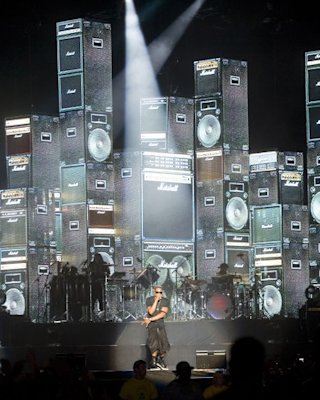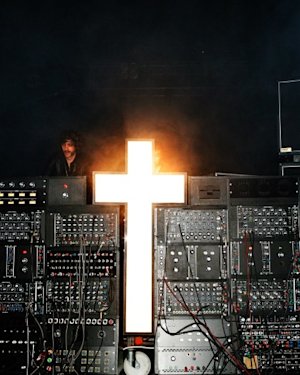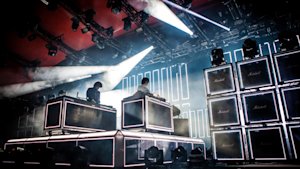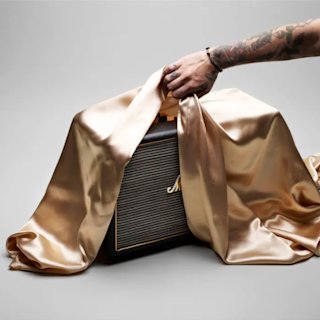
Jay-Z takes the Marshall Stack to another level.
As greater genre diversity transformed the music festival in the late ‘00s, Marshall was again sought upon by artists looking to navigate the cultural shift while making a big statement on stage.
Touring their massive, Grammy-nominated 2007 album ‘Cross’ at a time when fellow French electronic acts like Daft Punk were all over the radio, DJ duo Justice would be flanked by a wall of Marshall amps that harked back to the theatrics of Kiss and AC/DC. Their synth-heavy, basement rave bangers were a world away from the rock bands Marshall had been previously associated with – but Justice knew that for DJs to win over guitar-loving crowds at Coachella, Reading and Leeds, and Rock en Seine, Marshall would bridge the gap.
In the world of hip hop, Jay-Z also turned to Marshall to elevate his live shows around this time. The Brooklyn juggernaut had made history as the first rapper to headline the Pyramid Stage at Glastonbury in 2008, despite the protests of Noel Gallagher. At that festival, Jay-Z was backed by a thunderous live band who could crunch the message home: an emcee with a microphone could make the same impact as a rocker with an axe.

Justice performs live at Roskilde.
Subsequent Jay-Z tours and festival appearances – including those at Rock Am Ring, Isle of Wight Festival, and Coachella – were maximised by an arsenal of Marshall hardware (including the same models that were used to record Oasis’ 1995 mega-hit ‘Wonderwall’). A skyscraper of Marshall stacks supplied part of the show’s digital backdrop, as well. “We thought it was gonna be turned up to 10,” Jay-Z said while introducing ’99 Problems’ at Coachella in 2010. “But tonight… we’re gonna turn it all the way up to 99.”
With hip hop a mainstay on the festival circuit forever thereafter (most recently with Kendrick Lamar headlining Glastonbury in 2022), it’s safe to say Jay-Z’s mission was accomplished.

Justice live at Field Day festival, London.


